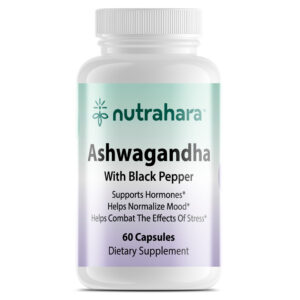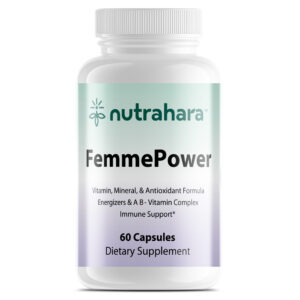1. Introduction: Natural Remedies for Hormonal Imbalance in Women
Hormonal balance is the silent architect of a woman’s well-being, orchestrating everything from energy levels to emotional stability. Yet, in today’s fast-paced world, women are more susceptible than ever to hormonal imbalances – often without realizing it. Factors like chronic stress, environmental toxins, poor diet, and disrupted sleep cycles quietly wreak havoc on the endocrine system, leading to unexplained weight gain, mood swings, fatigue, and even infertility.
Instead of immediately turning to pharmaceuticals, more women are exploring natural remedies for hormonal imbalance in women – a holistic approach that aligns with the body’s innate healing ability. Unlike synthetic hormone therapies that may provide short-term relief but disrupt long-term equilibrium, natural solutions work in harmony with the body, offering sustainable, side-effect-free results.
What many women don’t realize is that hormones are influenced by more than just diet and exercise. The microbiome in the gut, exposure to endocrine disruptors in personal care products, and even chronic inflammation from hidden food sensitivities all play a significant role. Addressing these lesser-discussed factors can be the missing link in restoring hormonal balance naturally.
This guide explores how diet, exercise, yoga, meditation, supplements, and essential oils can act as powerful regulators of hormonal health. By making strategic, science-backed lifestyle changes, women can reclaim their energy, improve mental clarity, and regain control over their hormonal well-being—without relying on synthetic interventions.

2. Understanding Hormonal Imbalance in Women
Hormones are the body’s chemical messengers, regulating critical functions such as metabolism, mood, digestion, reproductive health, and sleep. A delicate balance of estrogen, progesterone, cortisol, thyroid hormones, and insulin is essential for overall well-being. However, modern lifestyles often disrupt this harmony, leading to a cascade of health concerns.
2.1 What is Hormonal Imbalance?
Hormonal imbalance occurs when the body produces too much or too little of a specific hormone, throwing off its natural equilibrium. Unlike temporary fluctuations caused by menstrual cycles, pregnancy, or menopause, chronic imbalances can cause persistent health issues that impact daily life.
These imbalances are often the underlying cause of:
- Unexplained weight changes – Sudden weight gain or difficulty losing weight despite diet and exercise.
- Mood swings and anxiety – Fluctuations in estrogen and cortisol contribute to stress and depression.
- Irregular menstrual cycles – Skipped, painful, or unpredictable periods often signal hormonal disruptions.
- Chronic fatigue – A sluggish thyroid or adrenal dysfunction can lead to persistent tiredness.
- Digestive issues – An imbalance in cortisol and gut bacteria can trigger bloating and constipation.
- Hair thinning and acne – Excess androgens or low estrogen levels contribute to hair loss and breakouts.
To learn more about the signs of hormonal imbalance, read this UCLA Health article.
2.2 Common Causes of Hormonal Imbalance
While aging and reproductive milestones naturally shift hormone levels, other less obvious culprits disrupt hormonal health, including:
- Chronic stress – Elevated cortisol interferes with estrogen, progesterone, and thyroid function.
- Poor gut health – The gut microbiome plays a major role in estrogen metabolism and hormone detoxification.
- Exposure to endocrine disruptors – Chemicals in plastics, pesticides, and cosmetics mimic or block natural hormones.
- Nutrient deficiencies – Lack of essential vitamins (like B vitamins, magnesium, and omega-3s) impairs hormone production.
- Lack of quality sleep – Sleep deprivation affects melatonin and disrupts the balance of stress and reproductive hormones.
- Excessive caffeine and sugar – These substances spike insulin and cortisol, leading to imbalances in sex hormones.
2.3 Signs and Symptoms of Hormonal Imbalance
Recognizing the symptoms early can help women take preventive action. Some of the most common indicators include:
- Reproductive Health Issues
- Irregular or heavy periods
- Infertility or difficulty conceiving
- Intense PMS or menopausal symptoms
- Metabolic Changes
- Unexplained weight gain, especially around the abdomen
- Insulin resistance or sugar cravings
- Slow metabolism and low energy
- Mental and Emotional Health
- Anxiety, depression, or frequent mood swings
- Brain fog and difficulty concentrating
- Sleep disturbances or chronic fatigue
- Physical Manifestations
- Hair thinning or loss
- Dry skin or sudden acne breakouts
- Cold hands and feet (a sign of thyroid imbalance)
Understanding these triggers is the first step toward restoring balance naturally. The next sections will explore natural remedies for hormonal imbalance in women, focusing on diet, exercise, yoga, meditation, supplements, and essential oils that support hormone harmony.
3. How Diet Can Help Balance Hormones
A hormone-balancing diet is one of the most powerful natural remedies for hormonal imbalance in women. The right foods provide essential nutrients for hormone production, reduce inflammation, and support detoxification. On the other hand, certain foods can trigger hormonal disruptions, leading to imbalances that affect metabolism, mood, and reproductive health.
3.1 7 Hormone-Balancing Foods Every Woman Should Eat
Incorporating nutrient-dense, hormone-supportive foods into daily meals can help regulate estrogen, progesterone, insulin, and cortisol levels. Here are seven must-have foods:
- Flaxseeds – Rich in lignans, which help balance estrogen and improve menstrual cycle regularity.
- Avocados – High in healthy monounsaturated fats that support adrenal and thyroid function.
- Leafy Greens (Spinach, Kale, Swiss Chard) – Contain magnesium, a key nutrient for stress management and hormone production.
- Fatty Fish (Salmon, Mackerel, Sardines) – Loaded with omega-3 fatty acids, which reduce inflammation and support reproductive health.
- Eggs – Provide high-quality protein and choline, essential for brain and hormonal function.
- Fermented Foods (Kimchi, Sauerkraut, Yogurt, Kefir) – Improve gut health, which is crucial for estrogen metabolism and detoxification.
- Nuts and Seeds (Walnuts, Almonds, Sunflower Seeds) – Rich in zinc, selenium, and vitamin E, which support ovarian health and hormonal balance.
3.2 Foods to Avoid for Better Hormonal Health
Just as some foods support hormonal equilibrium, others contribute to imbalances. Avoiding these foods can help restore hormone function:
- Processed Foods – Contain artificial preservatives and unhealthy trans fats that disrupt endocrine function.
- Refined Sugars – Cause blood sugar spikes, leading to insulin resistance and excess cortisol production.
- Dairy Products – Some women are sensitive to conventional dairy, which may contain added hormones that interfere with natural estrogen levels.
- Excessive Caffeine – High caffeine intake increases cortisol, which can suppress progesterone and disrupt the menstrual cycle.
- Alcohol – Affects liver function, making it harder to metabolize and clear excess hormones.
Making mindful dietary choices is an essential first step toward natural remedies for hormonal imbalance in women. The next sections will explore how exercise, yoga, and lifestyle changes further support hormonal health.
4. Exercise and Its Role in Hormonal Balance
Regular physical activity is one of the most effective natural remedies for hormonal imbalance in women. Exercise influences the endocrine system, regulates stress hormones, stabilizes blood sugar, and promotes the production of mood-enhancing neurotransmitters. However, not all workouts have the same impact on hormonal health—choosing the right type of exercise is crucial for maintaining balance.
4.1 Best Workouts for Hormonal Health
Certain types of exercise can help regulate key hormones such as insulin, cortisol, estrogen, and progesterone. Here are the best forms of movement for hormonal balance:
- Strength Training – Lifting weights or performing bodyweight exercises (e.g., squats, push-ups) improves insulin sensitivity, supports metabolism, and enhances testosterone levels, which are essential for muscle growth and bone health.
- Low-Impact Cardio (Walking, Swimming, Cycling) – Helps lower cortisol levels and promotes heart health without over-stressing the body.
- High-Intensity Interval Training (HIIT) – Boosts human growth hormone (HGH) and enhances fat metabolism but should be done in moderation to prevent excess cortisol production.
- Pilates and Barre Workouts – Strengthen core muscles, improve posture, and support adrenal function, reducing the risk of burnout and fatigue.

4.2 The Importance of Restorative Movement
Excessive high-intensity workouts can spike cortisol, leading to adrenal fatigue and worsening hormonal imbalances. Incorporating restorative movement helps maintain hormonal harmony.
- Yoga – Reduces stress hormones like cortisol and supports thyroid function.
- Stretching and Mobility Work – Improves circulation, reducing inflammation and stiffness.
- Tai Chi and Qigong – Promote relaxation and balance the nervous system, benefiting adrenal health.
- Leisurely Walks in Nature – Help reset circadian rhythms, leading to better sleep and balanced melatonin production.
4.3 How to Sync Exercise with Your Menstrual Cycle
Women’s energy levels and hormone fluctuations vary throughout the menstrual cycle. Adapting exercise routines accordingly can enhance hormonal health.
- Follicular Phase (Days 1–14, post-period)
- Best time for high-energy workouts like strength training and HIIT.
- Estrogen levels rise, improving endurance and muscle recovery.
- Ovulatory Phase (Mid-cycle, around Day 14)
- Ideal for intense cardio and strength training.
- Testosterone peaks, boosting muscle-building potential.
- Luteal Phase (Days 15–28, pre-period)
- Opt for moderate-intensity workouts like yoga, Pilates, and walking.
- Progesterone rises, making the body more prone to fatigue and stress.
- Menstrual Phase (Days 1–5, during period)
- Focus on gentle movement like stretching, light yoga, and walking.
- Avoid intense training to prevent cortisol spikes and excessive fatigue.
Understanding how different workouts influence hormones allows women to train smarter, not harder. A balanced exercise routine is a key pillar in natural remedies for hormonal imbalance in women, helping to improve energy, mood, and overall well-being. The next section explores how yoga and meditation can further support hormonal harmony.
5. Yoga and Meditation for Hormonal Health
Yoga and meditation are powerful natural remedies for hormonal imbalance in women, offering a holistic approach to restoring internal equilibrium. Unlike high-intensity workouts that may elevate cortisol levels, yoga and mindfulness practices work with the body’s natural rhythms, calming the nervous system and supporting endocrine function. Regular practice can regulate stress hormones, improve sleep, enhance reproductive health, and promote emotional stability.
5.1 5 Yoga Poses to Balance Hormones Naturally
Certain yoga poses stimulate endocrine glands, enhance circulation, and improve hormonal flow. Here are five highly effective postures for hormone regulation:
- Child’s Pose (Balasana) – Relieves stress, calms the mind, and supports adrenal health by reducing cortisol levels.
- Reclined Butterfly Pose (Supta Baddha Konasana) – Opens the hips, increases blood flow to reproductive organs, and balances estrogen levels.
- Bridge Pose (Setu Bandhasana) – Stimulates the thyroid gland, promoting balanced metabolism and energy levels.
- Seated Forward Bend (Paschimottanasana) – Reduces anxiety, improves insulin sensitivity, and aids in digestion.
- Legs Up the Wall Pose (Viparita Karani) – Encourages lymphatic drainage, supports adrenal function, and promotes relaxation.
Practicing these poses daily, especially in the evening, can help reset the body’s hormonal balance.

5.2 How Meditation Reduces Cortisol and Stress Hormones
Meditation is a scientifically backed method for lowering cortisol, the primary stress hormone that can disrupt estrogen, progesterone, and thyroid hormones. Engaging in meditation for just 10–15 minutes per day can significantly improve hormone regulation by:
- Lowering cortisol and adrenaline levels, reducing the impact of chronic stress.
- Enhancing serotonin and dopamine production, promoting emotional stability and happiness.
- Regulating melatonin, leading to improved sleep cycles and balanced circadian rhythms.
- Improving heart rate variability (HRV), supporting nervous system function and reducing anxiety.
Simple meditation techniques such as breath-focused meditation, guided visualizations, or chanting mantras (e.g., “Om Shanti”) can help women regain hormonal equilibrium.
5.3 Creating a Hormone-Balancing Yoga and Meditation Routine
To maximize benefits, a structured routine combining yoga and meditation can be incorporated into daily life:
- Morning Routine (5–10 minutes)
- Start the day with deep belly breathing to stimulate the parasympathetic nervous system.
- Practice gentle Sun Salutations to boost circulation and energy levels.
- Midday Routine (5–10 minutes)
- Take a short break for Seated Forward Bend or Child’s Pose to reset stress hormones.
- Engage in a 5-minute guided meditation to enhance focus and relaxation.
- Evening Routine (15–20 minutes)
- Perform Legs Up the Wall Pose for 5 minutes to calm the nervous system.
- Follow with Alternate Nostril Breathing (Nadi Shodhana) to balance left and right brain activity.
- End with a Body Scan Meditation or a gratitude practice to prepare the body for restful sleep.
By integrating yoga and meditation into daily routines, women can naturally regulate hormone production, enhance emotional resilience, and achieve long-term well-being. This mind-body approach is one of the most effective natural remedies for hormonal imbalance in women, complementing dietary and lifestyle adjustments for optimal health.
6. Best Dietary Supplements for Hormonal Imbalance
Dietary supplements play a crucial role in natural remedies for hormonal imbalance in women, helping to restore balance where diet and lifestyle alone may not be enough. Certain vitamins, minerals, and herbs support hormone production, improve stress resilience, and enhance the body’s ability to detoxify excess hormones. Selecting high-quality, evidence-based supplements can help address issues such as irregular cycles, PMS, adrenal fatigue, and menopause symptoms.
6.1 Top 5 Supplements for Hormone Regulation
The right supplements can support the endocrine system and restore hormonal equilibrium. Here are five of the most effective options:
- Ashwagandha – An adaptogenic herb that reduces cortisol levels, supports adrenal health, and balances thyroid hormones.
- Maca Root – A Peruvian superfood that enhances energy, regulates estrogen levels, and improves fertility.
- Omega-3 Fatty Acids – Found in fish oil, flaxseed oil, and walnuts, these healthy fats reduce inflammation and support progesterone production.
- Vitamin D – Essential for regulating estrogen and progesterone, as well as improving mood and immune function.
- Magnesium – Helps lower cortisol, supports sleep, reduces PMS symptoms, and improves insulin sensitivity.

6.2 How Adaptogenic Herbs Help Hormonal Harmony
Adaptogens are natural substances that help the body adapt to stress and balance hormones. Some of the most effective adaptogenic herbs include:
- Rhodiola Rosea – Supports adrenal health, reduces fatigue, and improves cognitive function.
- Holy Basil (Tulsi) – Lowers cortisol, enhances estrogen metabolism, and supports the nervous system.
- Shatavari – A powerful Ayurvedic herb that supports reproductive health, balances estrogen, and reduces menopause symptoms.
- Licorice Root – Helps regulate cortisol and supports adrenal recovery from chronic stress.
Using targeted dietary supplements alongside diet, exercise, and stress management enhances the effectiveness of natural remedies for hormonal imbalance in women, offering a comprehensive approach to long-term wellness. The next section will explore how essential oils can further support hormonal health.
7. Essential Oils for Hormonal Balance
Essential oils have been used for centuries as powerful natural remedies for hormonal imbalance in women. These plant-based extracts contain bioactive compounds that support endocrine function, reduce stress, and help regulate menstrual cycles. When used correctly, essential oils can enhance relaxation, improve sleep, and alleviate symptoms of hormone-related conditions such as PMS, menopause, and adrenal fatigue.
7.1 4 Essential Oils That Support Hormone Health
The following essential oils are particularly effective in balancing hormones naturally:
- Clary Sage – Known for regulating estrogen levels, clary sage helps relieve PMS symptoms, reduce menstrual cramps, and support menopause transition.
- Lavender – Promotes relaxation, lowers cortisol levels, and improves sleep quality, making it beneficial for adrenal health.
- Peppermint – Helps reduce headaches, fatigue, and bloating often associated with hormonal fluctuations.
- Geranium – Supports progesterone balance, enhances mood, and promotes skin health by regulating sebum production.
7.2 How to Use Essential Oils for Maximum Benefits
To experience the hormone-balancing effects of essential oils, they can be used in various ways:
- Aromatherapy – Add a few drops to a diffuser to promote relaxation and stress relief.
- Topical Application – Dilute with a carrier oil (like coconut or jojoba oil) and apply to the abdomen, wrists, or feet for hormone support.
- Bath Soaks – Mix a few drops with Epsom salts and add to a warm bath to reduce muscle tension and balance stress hormones.
- Inhalation – Place a drop on the palms, rub together, and inhale deeply to quickly calm the nervous system.
Incorporating essential oils into a daily wellness routine can provide natural, gentle support for hormonal regulation. When combined with proper diet, exercise, and stress management, they are an effective component of natural remedies for hormonal imbalance in women. The next section will highlight real-life testimonials from women who have successfully restored their hormonal health naturally.
8. Real-Life Testimonials: Women Who Found Relief Naturally
The journey to hormonal balance is unique for every woman, but real-life success stories provide inspiration and proof that natural remedies for hormonal imbalance in women can be effective. These testimonials highlight how dietary changes, supplements, yoga, meditation, and essential oils helped women regain their energy, regulate their cycles, and restore overall well-being.
8.1 Sarah’s Story: Healing PCOS Through Diet and Supplements
Sarah, 32, struggled with irregular periods, acne, and weight gain due to PCOS (Polycystic Ovary Syndrome). Frustrated with conventional medications, she turned to:
- A low-glycemic diet rich in whole foods, healthy fats, and fiber.
- Spearmint tea to lower excess androgens and improve skin clarity.
- Maca root and omega-3 supplements to support hormonal balance.
- Strength training and daily walks to stabilize insulin levels.
After three months, Sarah noticed significant improvements—regular periods, clearer skin, and increased energy levels.
8.2 Emily’s Journey: Managing Menopause with Yoga and Essential Oils
Emily, 50, experienced hot flashes, night sweats, and mood swings during menopause. Instead of hormone replacement therapy, she adopted a holistic approach:
- Practiced yoga and meditation to reduce stress and promote better sleep.
- Used clary sage and lavender essential oils to ease hot flashes.
- Took ashwagandha and vitamin D to support adrenal health and bone strength.
- Adjusted her diet to include phytoestrogen-rich foods like flaxseeds and soy.
Within two months, her symptoms became more manageable, and she felt emotionally balanced and well-rested.
8.3 Lisa’s Transformation: Overcoming Adrenal Fatigue with Meditation
Lisa, 41, faced chronic exhaustion, brain fog, and sugar cravings due to adrenal fatigue. She found relief by:
- Prioritizing sleep and establishing a consistent bedtime routine.
- Practicing deep breathing exercises and guided meditation to lower cortisol.
- Supplementing with magnesium and Rhodiola Rosea to improve adrenal function.
- Replacing caffeine with herbal teas like holy basil and licorice root.
After four months, Lisa regained her energy, mental clarity, and emotional stability.
These real-life experiences show that natural remedies for hormonal imbalance in women can provide sustainable, long-term relief without relying on synthetic hormones or medications. The final section will provide actionable takeaways and a 7-day hormone reset plan to help women get started on their own healing journey.
9. Conclusion and Actionable Takeaways
Achieving hormonal balance is essential for overall well-being, and it doesn’t have to rely on synthetic medications. By embracing natural remedies for hormonal imbalance in women, such as dietary adjustments, targeted supplements, exercise, yoga, meditation, and essential oils, women can restore equilibrium and improve their quality of life. Small, consistent changes lead to sustainable results, empowering women to take control of their health.
9.1 Recap of Natural Remedies for Hormonal Imbalance in Women
- Nutrition: A hormone-friendly diet rich in healthy fats, fiber, and nutrient-dense foods supports endocrine function.
- Exercise: A balanced approach, including strength training, restorative movement, and cycle-synced workouts, optimizes hormonal health.
- Yoga & Meditation: These practices reduce cortisol, regulate stress hormones, and improve emotional stability.
- Supplements: Adaptogens, omega-3s, vitamin D, and magnesium provide essential support for hormonal regulation.
- Essential Oils: Clary sage, lavender, and geranium promote relaxation, balance hormones, and ease symptoms of PMS and menopause.
9.2 A 7-Day Hormone Reset Plan to Get Started
This simple one-week plan incorporates natural remedies for hormonal imbalance in women to help reset hormone levels:
- Day 1: Start the day with a nutrient-dense breakfast, including protein, healthy fats, and fiber.
- Day 2: Swap refined sugar for natural sweeteners like honey or stevia to stabilize insulin levels.
- Day 3: Practice 20 minutes of restorative yoga or deep breathing exercises to reduce cortisol.
- Day 4: Increase water intake and drink herbal teas (such as spearmint or ginger) to support detoxification.
- Day 5: Apply clary sage or lavender essential oil to pulse points to ease stress and promote relaxation.
- Day 6: Prioritize sleep by creating a calming nighttime routine and avoiding blue light before bed.
- Day 7: Reflect on the week’s progress and plan sustainable habits for long-term hormonal balance.
Written by the Nutrahara Team
This article was developed by the Nutrahara team of nutrition scientists and naturopaths, who specialize in formulating safe, effective, and science-backed supplements for women’s health. Every ingredient we use is carefully selected to support your body’s unique needs—naturally. Follow us on LinkedIn for expert insights and updates on our latest wellness solutions.

























